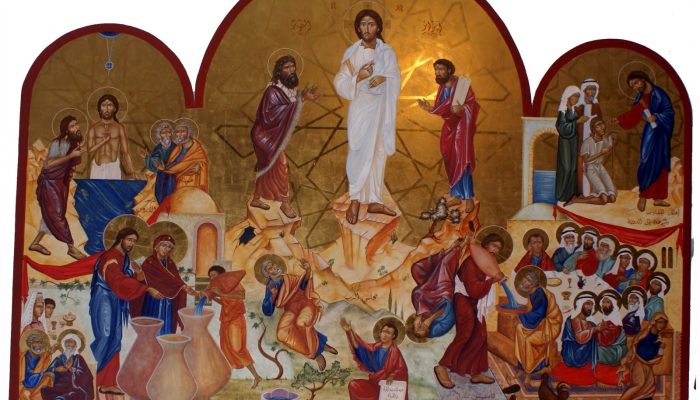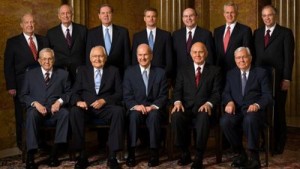
People who profess to be followers of the Lord Jesus Christ and adhere to the teachings found in His Word are far more blessed today than members of the early Christian Church in that they are able to possess a copy of the scriptures for themselves. They do not have to rely on an ecclesiastical leader to reveal to them the treasures found in the Word of God which can easily be left to the misguided personal interpretations rendered by said leaders. Also, they do not have to wait to attend a church service to have the scriptures read to them, but they are able to read and study the scriptures for themselves. Furthermore, those who wish to study the scriptures, unlike those in the early Christian Church who were only exposed to certain portions of the scriptures, now have a more complete canon.
Many homes have more than one copy of the Bible, and in some cases, different versions and/or translations of the Bible can also be found. And with the rapid increase in technological advances, a person is able to open the scriptures and read them whenever they want, and wherever they may be in the world.
Reasons for the fall of the Early Christian Church
In his Deseret News article titled “Defending the Faith: The fall of the early Christian church was almost inevitable”, Daniel Peterson exhorts that “The church founded anciently by Christ not only didn’t survive intact but probably couldn’t have.” He notes that there are perhaps several reasons for this.
 He states that one of the main reasons that Christ’s early Church did not survive intact was because with the expansion of Christianity beyond Palestine to many parts of the world, ancient means of travel and communication, as compared to our standards today, were extremely slow. Peterson also points out that, “the “supply lines” of ancient Christianity were long, fragile, corruptible and dangerously exposed to persecution, human sin and ambition, misunderstanding, forgetfulness and a host of other threats.”
He states that one of the main reasons that Christ’s early Church did not survive intact was because with the expansion of Christianity beyond Palestine to many parts of the world, ancient means of travel and communication, as compared to our standards today, were extremely slow. Peterson also points out that, “the “supply lines” of ancient Christianity were long, fragile, corruptible and dangerously exposed to persecution, human sin and ambition, misunderstanding, forgetfulness and a host of other threats.”
Another reason which Peterson states for the descent of the early Church is the fact that there was no New Testament. In his Deseret News article, Peterson commented,
To make things still worse, for at least the first century of Christianity (and, in sense, for much longer than that), there was no New Testament. It was still being written over the initial 30 to 70 years after the ascension of Christ, and, even when they were complete, individual gospels and epistles circulated separately; the “New Testament” hadn’t yet been gathered together, and the canon hadn’t yet been defined.
Even after they had been written and put into circulation, copies of scriptural texts, expensive and hand-produced, were extremely rare. Ordinary Christians wouldn’t have had their own private copies of scripture, let alone several of them, as we often do today. (Many of them likely couldn’t read, anyhow.)
The Coming Forth of the New Testament
 Christians regard both the Old and New Testaments as sacred scripture. The New Testament in particular deals explicitly with first-century Christianity. As such, as Christianity has spread throughout the world, the New Testament (in part or in whole) has served as a main resource for Christian theology and also as the true north of a Christian’s moral compass. Throughout the ages, the New Testament has had a major influence on religious, philosophical, and political movements in Christendom, and its teachings and doctrines are strongly evidenced in the literature, art, and music of many cultures.
Christians regard both the Old and New Testaments as sacred scripture. The New Testament in particular deals explicitly with first-century Christianity. As such, as Christianity has spread throughout the world, the New Testament (in part or in whole) has served as a main resource for Christian theology and also as the true north of a Christian’s moral compass. Throughout the ages, the New Testament has had a major influence on religious, philosophical, and political movements in Christendom, and its teachings and doctrines are strongly evidenced in the literature, art, and music of many cultures.
In almost all Christian denominations and sects today, the New Testament consists of 27 books. It was originally written by various writers who were early Jewish disciples of Jesus Christ in the first and perhaps second centuries of the Christian era. The language used for the text was Koine Greek, which was the common language of the Eastern Mediterranean from the Conquests of Alexander the Great (335–323 BC) until the evolution of Byzantine Greek (c. 600). All of the writings which were eventually incorporated into the New Testament text were perhaps written no later than AD 150.
The New Testament consists of:
- four narratives of the life, teaching, death and resurrection of Jesus Christ (Matthew, Mark, Luke, and John – collectively referred to as the “Gospels”)
- a narrative of the Apostles’ ministries in the early church called the “Acts of the Apostles” (which is a continuation of the Gospel of Luke and perhaps written by the same author)
- twenty-one letters referred to as “Epistles” in the biblical context, written by various authors, and consisting of Christian doctrine, counsel, instruction, and conflict resolution
- an Apocalypse, the Book of Revelation, which is a book of prophecy, containing some instructions to seven local congregations of Asia Minor, but mostly containing prophetic symbolism about the end times
Peterson further commented in his Deseret News article that “It’s literally a miracle that Christianity survived as well as it did” especially considering the fact that,
Local leaders, who perhaps joined the church after only the briefest of missionary instruction — commonly at the hands of preachers who, themselves, had received no more than a brief oral introduction to the basic Christian story and a few fundamental doctrines — would have had no scriptures to consult, let alone anything like a “general handbook of instructions” when difficult questions arose. And teachers and class members were unable to simply flip through their personal copies of the Bible in order to learn Christian doctrine and practice.
The Inability to Communicate with the Apostles in an Expeditious Manner
 What did the early Church leaders do when they were faced with a crisis or dilemma that necessitated immediate attention? During the time of the Apostles, they could send them inquiries for help, but the problem arose in trying to locate them at any given time or in any particular place as they did not have a permanent headquarters. Also there was no way of knowing if they were dead or alive. Even the amount of time that it took to get an inquiry to one of the Apostles was considerably long considering the antiquated means of transportation that had to be used to reach a certain location. And after a message reached one of them, the next major concern was the amount of time it would take to receive a reply. Therefore, in some cases, local leadership may have deliberated important issues for weeks, months, or even years before seeking advice from an Apostle.
What did the early Church leaders do when they were faced with a crisis or dilemma that necessitated immediate attention? During the time of the Apostles, they could send them inquiries for help, but the problem arose in trying to locate them at any given time or in any particular place as they did not have a permanent headquarters. Also there was no way of knowing if they were dead or alive. Even the amount of time that it took to get an inquiry to one of the Apostles was considerably long considering the antiquated means of transportation that had to be used to reach a certain location. And after a message reached one of them, the next major concern was the amount of time it would take to receive a reply. Therefore, in some cases, local leadership may have deliberated important issues for weeks, months, or even years before seeking advice from an Apostle.
If an Apostle were to visit an area, how would the people be able to identify him as being who he claimed to be if they had never met him previously? After all, the Apostle Paul had given stern warning against “false apostles” as recorded in 2 Corinthians 11:13-15:
For such are false apostles, deceitful workers, transforming themselves into the apostles of Christ. And no marvel; for Satan himself is transformed into an angel of light. Therefore it is no great thing if his ministers also be transformed as the ministers of righteousness; whose end shall be according to their works.
Peterson concludes his article by stating,
 For these and other reasons, as I say, it’s difficult for me to imagine how the ancient church could ever have survived without serious deformation. And we know by divine revelation that, in fact, it didn’t. That is why the Restoration was necessary.
For these and other reasons, as I say, it’s difficult for me to imagine how the ancient church could ever have survived without serious deformation. And we know by divine revelation that, in fact, it didn’t. That is why the Restoration was necessary.
He further points out that all of the modern conveniences and technology that we are afforded today have contributed immensely to the great cause of the Restoration of Christ’s Church.






